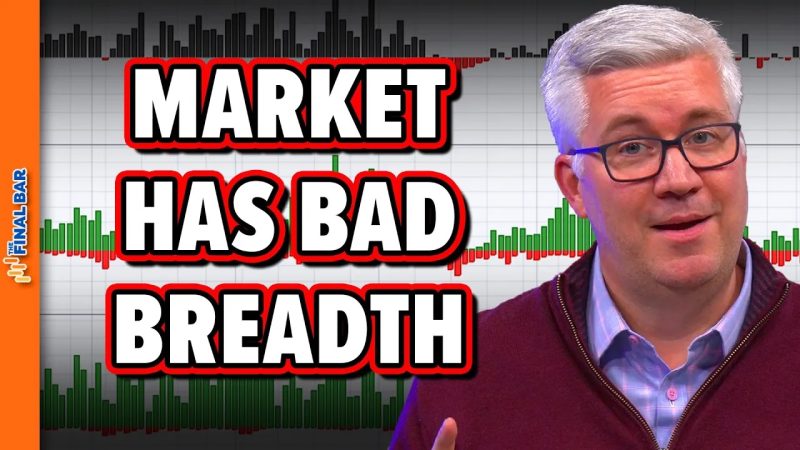Market breadth is a crucial concept in the world of investments, often serving as a barometer of the overall health of the market. Essentially, market breadth measures the participation of individual stocks or components in a market movement. It provides insights into the degree of strength or weakness behind a market trend by examining how many stocks are advancing versus declining.
In its essence, poor market breadth can trigger worries among investors and traders. When a limited number of stocks are driving the market higher, it suggests that the overall market is being propped up by only a handful of strong performers. This lack of broad-based participation can indicate a fragile market rally that is not supported by a wide range of companies. In such scenarios, sudden shifts or corrections can have a more significant impact on market direction due to the lack of sector diversification.
Furthermore, poor market breadth can also be a warning sign of underlying structural issues within the market. It may indicate that investor sentiment is concentrated in a few select stocks or sectors, leading to potential market instability. In these situations, market participants should be cautious and diligent in their risk management strategies to navigate potential downside risks.
However, it is essential to note that market breadth indicators are just one piece of the puzzle in assessing market health. While poor market breadth can be a cause for concern, it is not a standalone factor that should dictate investment decisions. Investors should consider a comprehensive analysis of various market indicators, economic factors, and company-specific fundamentals to make well-informed investment choices.
Moreover, poor market breadth can sometimes present opportunities for astute investors. During periods of narrow market leadership, undervalued or overlooked stocks in sectors with improving fundamentals may present attractive investment prospects. By conducting thorough research and analysis, investors can identify hidden gems that have the potential to outperform in the long run, regardless of broader market conditions.
In conclusion, while poor market breadth can raise concerns about the sustainability of market rallies and underlying market dynamics, it should not be viewed in isolation. Investors should adopt a holistic approach to evaluating market conditions and make investment decisions based on a balanced assessment of various factors. By staying informed, disciplined, and adaptable, investors can navigate through market uncertainties and capitalize on opportunities that arise, even in challenging market environments.

